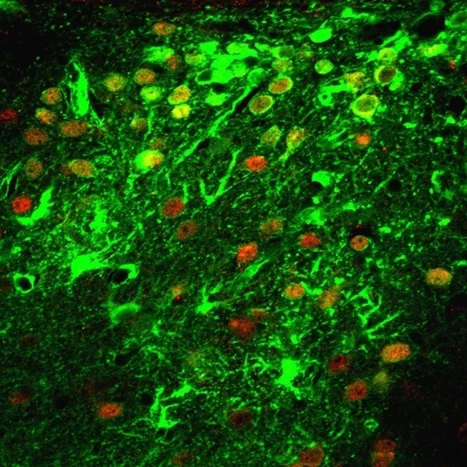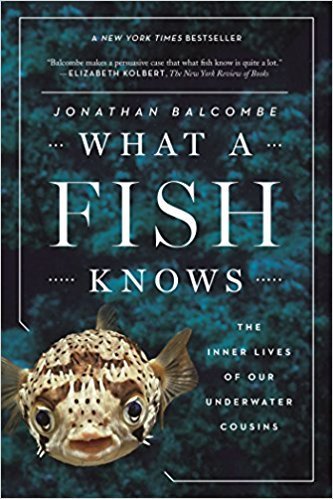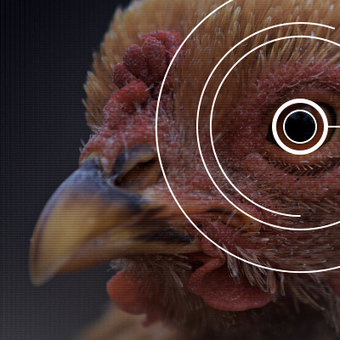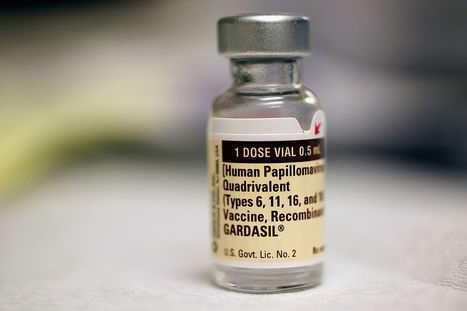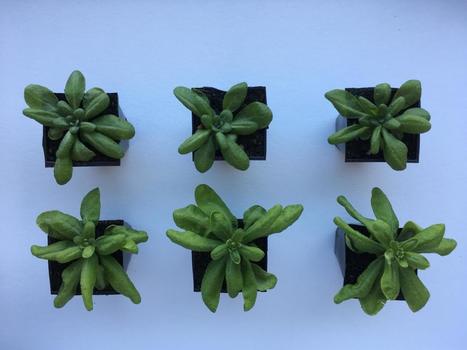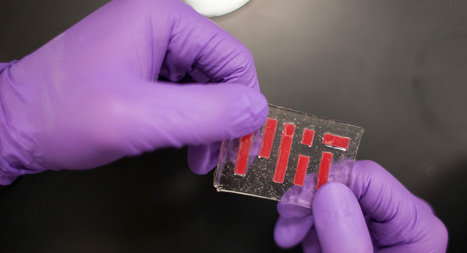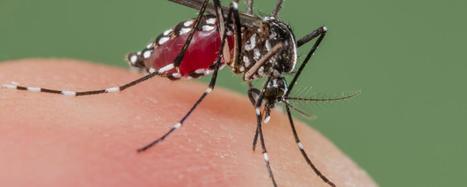 Your new post is loading...
 Your new post is loading...
Is Chinese urbanization going to take a long time, or can its development goal be achieved by the government in a short time? What is the highest stable urbanization level that China can reach? When can China complete its urbanization? To answer these questions, this paper presents a system dynamic (SD) model of Chinese urbanization, and its validity and simulation are justified by a stock-flow test and a sensitivity analysis using real data from 1998 to 2013. Setting the initial conditions of the simulation by referring to the real data of 2013, the multi-scenario analysis from 2013 to 2050 reveals that Chinese urbanization will reach a level higher than 70% in 2035 and then proceed to a slow urbanization stage regardless of the population policy and GDP growth rate settings; in 2050, Chinese urbanization levels will reach approximately 75%, which is a stable and equilibrium level for China. Thus, it can be argued that Chinese urbanization is a long social development process that will require approximately 20 years to complete and that the ultimate urbanization level will be 75–80%, which means that in the distant future, 20–25% of China’s population will still settle in rural regions of China. Chinese urbanization 2050: SD modeling and process simulation
GU Chao Lin, GUAN Wei Hua, LIU He Lin SCIENCE CHINA Earth Sciences 60(6), 1067-1082(2017); 10.1007/s11430-016-9022-2
Via Complexity Digest
This web collection showcases the potential of interdisciplinary complexity research by bringing together a selection of recent Nature Communications articles investigating complex systems. Complexity research aims to characterize and understand the behaviour and nature of systems made up of many interacting elements. Such efforts often require interdisciplinary collaboration and expertise from diverse schools of thought. Nature Communications publishes papers across a broad range of topics that span the physical and life sciences, making the journal an ideal home for interdisciplinary studies.
Via Complexity Digest
The 1918 influenza pandemic probably infected one-third of the world's population at the time — 500 million people. It killed between 50 million and 100 million; by contrast, Second World War deaths numbered around 60 million. Why is this catastrophe
Via Ed Rybicki
Gene transfer is seen as a hopeful therapy for Alzheimer's and Parkinson's patients. The approach involves using harmless laboratory-produced viruses to introduce important genes into the brain cells. In a study on mice
Via Gilbert C FAURE
There are more than thirty thousand species of fish―more than mammals, birds, reptiles, and amphibians combined. But for all their breathtaking diversity and beauty, we rarely consider how fish think, feel, and behave. In What a Fish Knows, the ethologist Jonathan Balcombe takes us under the sea and to the other side of the aquarium glass to reveal what fishes can do, how they do it, and why. Introducing the latest revelations in animal behavior and biology, Balcombe upends our assumptions about fish, exposing them not as unfeeling, dead-eyed creatures but as sentient, aware, social―even Machiavellian. They conduct elaborate courtship rituals and develop lifelong bonds with shoal-mates. They also plan, hunt cooperatively, use tools, punish wrongdoers, curry favor, and deceive one another. Fish possess sophisticated senses that rival our own. The reef-dwelling damselfish identifies its brethren by face patterns visible only in ultraviolet light, and some species communicate among themselves in murky waters using electric signals. Highlighting these breakthrough discoveries and others from his own encounters with fish, Balcombe inspires a more enlightened appraisal of marine life. An illuminating journey into the world of underwater science, What a Fish Knows will forever change your view of our aquatic cousins.
Via Complexity Digest
The majority of human emerging infectious diseases are zoonotic, with viruses that originate in wild mammals of particular concern (for example, HIV, Ebola and SARS). Understanding patterns of viral diversity in wildlife and determinants of successful cross-species transmission, or spillover, are therefore key goals for pandemic surveillance programs. However, few analytical tools exist to identify which host species are likely to harbour the next human virus, or which viruses can cross species boundaries. Here we conduct a comprehensive analysis of mammalian host–virus relationships and show that both the total number of viruses that infect a given species and the proportion likely to be zoonotic are predictable. After controlling for research effort, the proportion of zoonotic viruses per species is predicted by phylogenetic relatedness to humans, host taxonomy and human population within a species range—which may reflect human–wildlife contact. We demonstrate that bats harbour a significantly higher proportion of zoonotic viruses than all other mammalian orders. We also identify the taxa and geographic regions with the largest estimated number of ‘missing viruses’ and ‘missing zoonoses’ and therefore of highest value for future surveillance. We then show that phylogenetic host breadth and other viral traits are significant predictors of zoonotic potential, providing a novel framework to assess if a newly discovered mammalian virus could infect people.
Via Ed Rybicki
This is an open-label and triple cohort study of the safety and efficacy of TALEN and CRISPR/Cas9 to possibly treat HPV Persistency and human cervical intraepithelial neoplasiaⅠwithout invasion.
Via Gerd Moe-Behrens
Computer models can help humans gain insight into the functioning of complex systems. Used for training, they can also help gain insight into the cognitive processes humans use to understand these systems. By influencing humans understanding (and consequent actions) computer models can thus generate an impact on both these actors and the very systems they are designed to simulate. When these systems also include humans, a number of self-referential relations thus emerge which can lead to very complex dynamics. This is particularly true when we explicitly acknowledge and model the existence of multiple conflicting representations of reality among different individuals. Given the increasing availability of computational devices, the use of computer models to support individual and shared decision making could potentially have implications far wider than the ones often discussed within the Information and Communication Technologies community in terms of computational power and network communication. We discuss some theoretical implications and describe some initial numerical simulations. Models and people: An alternative view of the emergent properties of computational models
Fabio Boschetti Complexity Volume 21, Issue 6
July/August 2016
Pages 202–213 http://dx.doi.org/10.1002/cplx.21680
Via Complexity Digest
John H. Holland's general theories of adaptive processes apply across biological, cognitive, social, and computational systems.
Scientists are exploring a mysterious pattern, found in birds’ eyes, boxes of marbles and other surprising places, that is neither regular nor random.
Synthetic biology approaches range from the introduction of unique features into organisms to the assembly of isolated biomacromolecules or synthetic building blocks into artificial biological systems with biomimetic or completely novel functionalities. Simple molecular systems can be based on containers on the nanoscale that are equipped with tailored functional modules for various applications in healthcare, industry or biological and medical research. The concept, or vision, of assembling native or engineered proteins and/or synthetic components as functional modules into molecular systems is discussed. The main focus is laid on the engineering of energizing modules generating chemical energy, transport modules using this energy to translocate molecules between compartments of a molecular system, and catalytic modules (bio-)chemically processing the molecules. Further key aspects of this discourse are possible approaches for the assembly of simple nanofactories and their applications in biotechnology and medical health.
Via Gerd Moe-Behrens
Robot scientist Eve can perform a wide range of biological assays, screening at a moderately high throughput rate (credit: Kevin Williams et al./J. R. Soc.
Via Gerd Moe-Behrens
In the late 1990s, Sainsbury’s and Safeway... both offered GM tomato purée... GM and non-GM cans of purée stood side by side on their shelves, the former some 18% cheaper... The cans were conspicuously labelled and pamphlets explaining what GM was all about were to hand nearby. But when the stock ran out and it was time to re-order, the anti-GM food balloon had gone up and the product was discontinued...
In 1999 Marks & Spencer announced that it was removing all GM foods from its shelves. (In a House of Lords inquiry at that time, M&S said their customers demanded it. When asked by their lordships how many customers that meant, it turned out to have been rather a small percentage. But those who positively wanted GM were, it seems, even fewer in number)...
All the other retailers followed suit: the UK’s retail industry was to be GM-free – or was it? In fact some GM products... were always to be found... Then there is the question of GM fodder for animals.... retailers said that they would not sell any products from pigs or poultry that had been exposed to GM feeds...
Until, that is, when Asda became the first of the leading UK supermarkets to abandon its commitment to eggs and poultry fed with GM in 2010... But by then public opinion on the issue had become almost completely mute... GM-feed for pigs and poultry was no longer to be excluded... there appears to have been no noticeable consumer rejection of products from animals fed GM...
More than half the world’s cotton is GM, so this is likely to be the case with products on sale in the UK. There is no obligation to label GM cotton so one cannot be sure, but nobody seems to ask and few seem to care...
Public interest in this subject has largely waned... Though one can never be quite sure, it does begin to look as though the GM issue will fade away in the fullness of time, in England at least, even if it takes a while. I suspect GM food and crops will become commonplace and the protesting community will veer off in another direction, chasing new demons.
https://theconversation.com/whatever-happened-to-bans-on-gm-produce-in-british-supermarkets-51153
Via Alexander J. Stein
|
Advancements in science and technology take place on a global scale without much consideration of the exact implications that they may essentially have on the species or our planet. Over the last few decades, things are moving very fast and not always in a good way. The climate of the planet is changing drastically. Ice caps are melting faster than ever. Known animal species around the world are declining at rates faster than ever previously known in recorded history. We humans, might have intelligent individuals amidst us. However, collectively, to any external observer, we would perhaps seem to act more like mindless scavengers stripping the planet of its resources faster than she can ever replenish them. And this all seems to be intrinsically linked with our seemingly insatiable “collective” urge to satisfy immediate needs. So, while the technological revolution has greatly benefited humankind, our continual reliance on technology also has considerable collateral effects on the planet. Why teach modeling & simulation in schools?
Muaz A. Niazi and Anatoly Temkin
Complex Adaptive Systems Modeling20175:7
https://doi.org/10.1186/s40294-017-0046-y
Via Complexity Digest
This year marks the tenth anniversary of the identification of the biological function of CRISPR–Cas as adaptive immune systems in bacteria. In just a decade, the characterization of CRISPR–Cas systems has established a novel means of adaptive immunity in bacteria and archaea and deepened our understanding of the interplay between prokaryotes and their environment, and CRISPR-based molecular machines have been repurposed to enable a genome editing revolution. Here, we look back on the historical milestones that have paved the way for the discovery of CRISPR and its function, and discuss the related technological applications that have emerged, with a focus on microbiology. Lastly, we provide a perspective on the impacts the field has had on science and beyond.
Via Gerd Moe-Behrens
New study suggests HPV-related genital infection can cause cervical, anal, vulvar, and vaginal cancers.
Biological organisms must perform computation as they grow, reproduce, and evolve. Moreover, ever since Landauer's bound was proposed it has been known that all computation has some thermodynamic cost -- and that the same computation can be achieved with greater or smaller thermodynamic cost depending on how it is implemented. Accordingly an important issue concerning the evolution of life is assessing the thermodynamic efficiency of the computations performed by organisms. This issue is interesting both from the perspective of how close life has come to maximally efficient computation (presumably under the pressure of natural selection), and from the practical perspective of what efficiencies we might hope that engineered biological computers might achieve, especially in comparison with current computational systems. Here we show that the computational efficiency of translation, defined as free energy expended per amino acid operation, outperforms the best supercomputers by several orders of magnitude, and is only about an order of magnitude worse than the Landauer bound. However this efficiency depends strongly on the size and architecture of the cell in question. In particular, we show that the {\it useful} efficiency of an amino acid operation, defined as the bulk energy per amino acid polymerization, decreases for increasing bacterial size and converges to the polymerization cost of the ribosome. This cost of the largest bacteria does not change in ancells as we progress through the major evolutionary shifts to both single and multicellular eukaryotes. However, the rates of total computation per unit mass are nonmonotonic in bacteria with increasing cell size, and also change across different biological architectures including the shift from unicellular to multicellular eukaryotes. The thermodynamic efficiency of computations made in cells across the range of life
Christopher P. Kempes, David Wolpert, Zachary Cohen, Juan Pérez-Mercader
Via Complexity Digest
The Indian vaccine, which protects against gastroenteritis caused by rotavirus, was tested in Niger.
Via Ed Rybicki
You might think that plants grow according to how much nutrition, water and sunlight they are exposed to, but new research... shows that the plant's own genetics may be the real limiting factor.
"This could have potentially big implications for the agricultural industry... Our model plant is in the same family as cabbages, so it's easy to imagine creating giant cabbages or growing them to the desired market size faster than at present."
It was previously assumed that plant growth was generally resource-limited, meaning that plants would only grow as large and fast as they could photosynthesise. However, Dr Pullen and his team present evidence that plant growth is actually "sink-limited", meaning that genetic regulation and cell division rates have a much bigger role in controlling plant growth than previously thought:
"We are proposing that plant growth is not physically limited by Net Primary Productivity (NPP) or the environment, but instead is limited genetically in response to these signals to ensure they do not become limiting."
By genetically altering the growth repressors in Arabidopsis, Dr Pullen and his team were able to create mutant strains. They identified the metabolic rates of the different plant strains... as well as comparing the size and weight of the plants... also grew the mutant plant strains at different temperatures to see if this changed their results: "When grown at different temperatures we still find a difference in size"...
The impact of these results is wide-reaching, and... it may even change how we think about global climate data: "Climate models need to incorporate genetic elements because at present most do not, and their predictions would be much improved with a better understanding of plant carbon demand."
https://www.eurekalert.org/pub_releases/2017-07/sfeb-gml070117.php
Via Alexander J. Stein
Genetic disease affecting vision can significantly impact patient quality of life. Gene therapy seeks to slow the progression of these diseases by treating the underlying etiology at the level of the genome. Clustered regularly interspaced short palindromic repeats (CRISPR) and CRISPR-associated systems (Cas) represent powerful tools for studying diseases through the creation of model organisms generated by targeted modification and by the correction of disease mutations for therapeutic purposes. CRISPR-Cas systems have been applied successfully to the visual sciences and study of ophthalmic disease - from the modification of zebrafish and mammalian models of eye development and disease, to the correction of pathogenic mutations in patient-derived stem cells. Recent advances in CRISPR-Cas delivery and optimization boast improved functionality that continues to enhance genome-engineering applications in the eye. This review provides a synopsis of the recent implementations of CRISPR-Cas tools in the field of ophthalmology.
Via Gerd Moe-Behrens
A goal of synthetic biology bio-foundries is to innovate through an iterative design/build/test/learn pipeline. In assessing the value of new chemical production routes, the intellectual property (IP) novelty of the pathway is important. Exploratory studies can be carried using knowledge of the patent/IP landscape for synthetic biology and metabolic engineering. In this paper, we perform an assessment of pathways as potential targets for chemical production across the full catalogue of reachable chemicals in the extended metabolic space of chassis organisms, as computed by the retrosynthesis-based algorithm RetroPath. Our database for reactions processed by sequences in heterologous pathways was screened against the PatSeq database, a comprehensive collection of more than 150M sequences present in patent grants and applications. We also examine related patent families using Derwent Innovations. This large-scale computational study provides useful insights into the IP landscape of synthetic biology for fine and specialty chemicals production.
Via Gerd Moe-Behrens
Few of us really understand the weird world of quantum physics – but our bodies might take advantage of quantum properties
Samsung is willing to put its money where its mouth is when it comes to the Internet of Things. The electronics giant is spending $1.2 billion on Io
Engineers from MIT have developed a substance that could be used as an artificial skin, long-lasting contact lens, drug-delivering bandage, and more.
Via Gerd Moe-Behrens
From Canada, the ovillanta is a clever — and highly effective — mosquito trap made from the pests' favourite breeding spot.
|



 Your new post is loading...
Your new post is loading...


